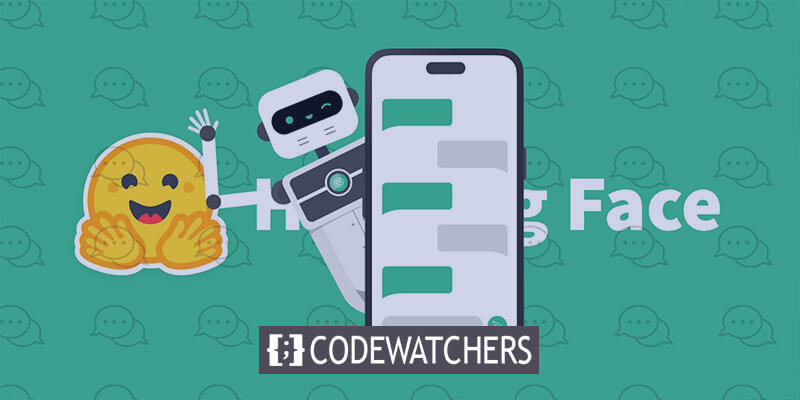In the tech world businesses and individuals must communicate smoothly with AI-based chat systems. Whether you're creating a top-notch customer service chatbot, an assistant or an interactive educational chat program choosing the right conversational model can greatly impact your project's success.

Hugging Face, an open-source platform is a go-to spot for developers and researchers looking for access, to a variety of cutting-edge conversational models. With its model hub, Hugging Face offers options each with its unique strengths and specializations. However, navigating this array and finding the model for your specific needs can be overwhelming.
In this guide, we'll explore the factors to consider when choosing the best conversational model from Hugging Face. From understanding model types and their key features to assessing performance and deployment aspects we aim to provide you with insights to help you make informed decisions that match your project objectives.
Understanding Conversational Models

The conversational model is crucial for a good conversational experience. It's an advanced AI system designed to interact using natural language. These models use sophisticated algorithms to understand user inputs. It also generates coherent responses and stays aware of the context during the conversation.
Create Amazing Websites
With the best free page builder Elementor
Start NowTypes of Conversational Models
Conversational models come in different types, each with unique capabilities and applications. Here are a few examples:
- Chatbots: These are task-oriented conversational agents. Such models are used for customer service, information retrieval, or task automation. They excel at structured dialogues and provide quick, targeted responses.
- Language Models: Models like GPT-3 or BERT are general-purpose AI systems. These models train on vast amounts of text. They have a broad understanding of language and can engage in open-ended conversations. Also, they can generate text, and perform tasks like summarization or translation.
- Dialogue Agents: These advanced models handle multi-turn, contextual dialogues. They have used platforms where maintaining engaging conversations is important. For example - virtual assistants, interactive storytelling, or educational platforms.
Key Features and Capabilities of Conversational Models
Modern conversational models possess a range of advanced features and capabilities, including:
- Natural Language Understanding (NLU): They comprehend user inputs, considering context, intent, and subtlety.
- Language Generation: Models produce coherent and relevant responses based on the conversation.
- Contextual Awareness: They maintain and utilize contextual information for consistent and coherent responses.
- Personalization and Adaptation: Models can personalize the conversation based on user interactions. Also, they can adjust their communication style accordingly.
- Multimodal Interaction: They support various input and output modes like text, voice, images, or gestures for a more immersive experience.
Understanding the different types and features of conversational models is important. It will help you choose the right model for your project.
9 Factors to Consider When Choosing a Conversational AI Model
When selecting a conversational model from the Hugging Face platform, there are several key factors to consider to ensure that you choose the best-fit solution for your project's needs. Let's explore these factors in detail:
Specific Use Case
Clearly define the primary purpose of your conversational model. It could be customer service, personal assistance, educational applications, or others. This will help you find models that have been specifically designed for your target use case.
Targeted Language and Domain
Select the language(s) and subject matter expertise required for your project. Some models may be general-purpose. Others may specialize in specific domains like healthcare, finance, or technology.
Accuracy and Coherence of Responses
Assess the model's ability to provide accurate, relevant, and coherent responses that align with the user's intent and the context of the conversation.
Responsiveness and NLP Understanding
Evaluate the model's capacity to understand and respond to natural language inputs, including handling complex queries, detecting and responding to nuance, and maintaining contextual awareness.
Handling of Context and Multi-Turn Conversations
Consider how well the model can manage and leverage contextual information across multiple turns of a conversation, ensuring a seamless and natural flow of dialogue.
Trade-offs between Model Size, Inference Speed, and Resource Usage
Understand the balance between model size, inference speed, and the computational resources required for deployment. Larger models may offer greater capabilities but may require more powerful hardware to run efficiently.
Deployment on Different Hardware and Platforms
Evaluate the model's compatibility and performance on the hardware and platforms you plan to use for deployment, whether it's on-premises servers, cloud infrastructure, or edge devices.
Fine-Tuning The Model for Your Specific Needs
Assess the Conversational AI model's flexibility in terms of fine-tuning and adaptation, which can help you tailor the conversational experience to your unique requirements.
Transfer Learning and Domain Adaptation
Investigate the model's capacity for transfer learning, allowing you to leverage pre-trained model parameters and adapt them to your specific domain or use case.
If you thoroughly evaluate these factors, you'll be able to identify the Hugging Face conversational model.
Why Conversation AI is Better than Traditional Chatbots
Traditional chatbots have been around for a while, but Conversation AI models, like the ones on the Hugging Face platform, offer significant advantages. Let's look at the key differences:
Better Language Understanding and Generation
Conversation AI models can understand complex queries and respond in a more natural, human-like way. They can pick up on context and nuance, unlike the limited, rule-based responses of traditional chatbots.
Improved Contextual Awareness
Conversation AI models can remember and reference relevant information from previous parts of the conversation. This makes the interaction more seamless and personalized, compared to the disjointed nature of traditional chatbots.
Increased Adaptability and Personalization
Conversation AI models can learn and adjust their communication style to better suit individual users. Traditional chatbots often have a one-size-fits-all approach.
Broader Capabilities
Conversation AI models on Hugging Face can do more than just simple, predefined tasks. They can engage in open-ended discussions, translate languages, summarize text, and even assist with creative writing.
Continuous Improvement
The Hugging Face platform and Conversation AI models benefit from ongoing research, development, and community contributions. Traditional chatbots often require manual updates to keep up with changing user needs.
By using Conversation AI models from Hugging Face, you can provide your users with a more natural, adaptive, and valuable interactive experience, surpassing the limitations of traditional chatbots.
Top 3 Conversational AI Tools In 2024 For Business
Here are the finest Conversational AI tools that you can have in recent days. if you are a business owner, building a conversational chatbot from scratch is a daunting job. Rather look in these tools and you will find what best suits your needs.
Google Dialogflow

Dialogflow by Google Cloud is a comprehensive Conversational AI platform, encompassing natural language understanding, sentiment analysis, and multi-channel support. It enables enterprises to develop chatbots and virtual assistants for websites, mobile apps, and messaging platforms.
With robust machine-learning capabilities, Dialogflow can understand and respond to user queries in real time, providing personalized assistance and fostering engagement. Formerly known as Api.ai, Dialogflow is a cutting-edge tool that has revolutionized human-computer interaction. It facilitates the creation of voice and text-based conversational interfaces powered by artificial intelligence.
Key Features
- Powerful NLP capabilities
- User-Friendly Interface
- Personalization
- Scalability
- Cross-App Compatibility
- Multilingual Support
IBM Watson Assistant

IBM Watson Assistant is a leading Conversational AI platform that enables enterprises to develop and deploy virtual assistants across various channels. With advanced AI capabilities like natural language processing and intent recognition, it enables the creation of tailored conversational experiences for customer support, sales assistance, and internal operations.
IBM Watson Assistant excels in diverse applications, revolutionizing customer interactions through automated chatbots and virtual assistants. While it offers ease of use and enhanced customer support, there may be a learning curve for configuring AI models. Improved documentation and tutorial videos could aid faster implementation.
Key Features
- Seamless Human-Bot
- Distinct Dataset
- Contextual Understanding
- Voice Capability
- Intent Recognition
- Diverse Application
Amazon Lex

Amazon Lex is a fully managed Conversational AI service provided by AWS, allowing enterprises to develop chatbots and virtual assistants powered by Amazon's expertise. With deep learning algorithms and automatic speech recognition capabilities, Lex can understand and interpret user inputs in multiple languages and dialects. It automates customer support, streamlines sales processes, and boosts employee productivity through conversational interfaces. Seamlessly integrated with AWS services, Lex is particularly advantageous for businesses within the Amazon ecosystem.
Amazon Lex offers a user-friendly solution for chatbot development, supporting both code and no-code configurations. While praised for ease of implementation, design flexibility, and effective chatbot training, some users express concerns about limited capabilities compared to newer solutions. Improvements in documentation and external website integration are highlighted. Amazon Lex is well-suited for businesses integrated with AWS but may present challenges for those outside the Amazon ecosystem.
Key Features
- Intent Understanding
- Seamless AWS Integration
- User Authentication and Authorization
- Multi-Language Support
- Context Maintenance
- Dialogue Flow Design
- Automatic Speech Recognition
- Scalability and Reliability
Wrapping Up
By carefully selecting the right model from their extensive selection, you can unlock new possibilities for natural language interaction.
The key is to deeply understand your project's specific needs and requirements. Evaluate model performance, consider deployment factors, and explore the customization options Hugging Face offers.
Engaging with the vibrant Hugging Face community can also open up new avenues for innovation and collaboration. Experiment, iterate, and push the boundaries of what's possible in conversational AI.
The future is bright for Hugging Face and conversational AI. Dive in, explore, and unleash the full potential of this transformative technology.





